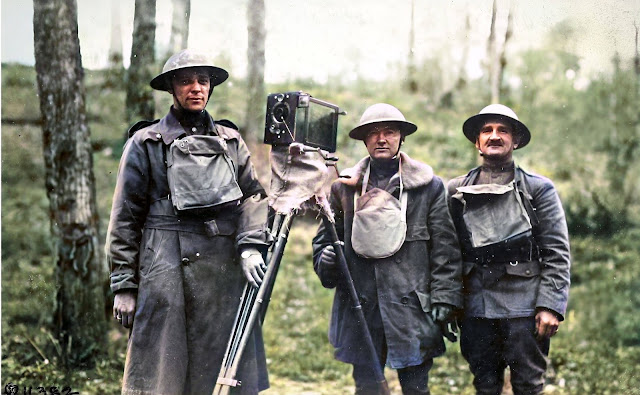Ever since movies were first shown on the screen glass slides were an integral part of the early cinema experience. The first theaters were often equipped with only one projector and films were usually one or two-reelers. While changing films the audience needed to be entertained and because of this slides were projected, displaying lyrics and illustrations of popular songs. By the 1910s theaters also used the "Magic Lantern" to project slides on the screen, showing upcoming films. These slides were often referred to as “lantern” slides because of their origin in pre-cinema magic lantern shows.
 |
Glass slides sent to a movie theater in Green Bay, Wisconsin, in 1917 to show between films giving current news on events involving World War I |
The glass slide advertising Durborough's film is of a specific type and appears to have been part of a promotional kit that was distributed to exhibitors to advertise his war film. The Durborough film slide consist of two panes of glass held closely together. The inside surface of the glass has been imprinted with a positive image of the coming attraction, showing Kaiser Wilhelm II and Field Marshal von Hindenburg. There is a solid black border on both panes on the outside of the image. The two panes measure exactly 3 1/4” by 4”, and they are held together with pieces of black tape on the edges of the two panes. Usually there is a blank border left inside this type of slide for listing local show days. The “black tape” type was mostly made from the earliest silents through the mid-1930s.
Mystery
We found the glass slide on the website of the International Center of Photography (ICP) in New York City and contacted Claartje van Dijk, the assistant curator. The ICP, she said, unfortunately doesn't have any information other than that this is a lantern slide taken by an unidentified photographer. It was donated in 2011 to the International Center of Photography. So, while the provenance of this glass slide remains a mystery, we do get a interesting glimpse how Durborough's film was advertised in the American theaters during World War I.Based on our research Durborough's film On the Firing Line with the Germans (1915) last year has been restored by the Library of Congress and was shown again for the first time since 1917 at the Pordenone Festival of Silent Film in October 2015. The Library of Congress announced the online release of Durborough's restored World War I film in this weblog on November 11, 2016.
We recently prepared a new, extended story on Durborough's photographic work during World War I. You can read this Durborough Film Annotation here.




































